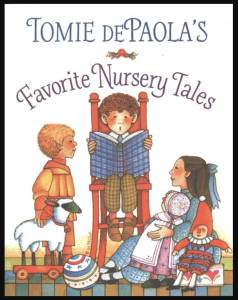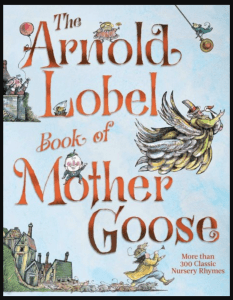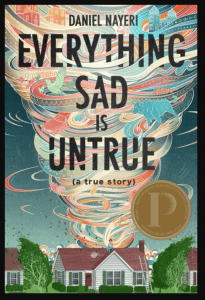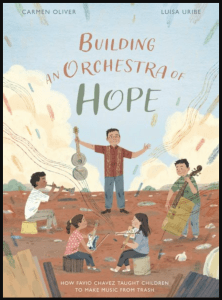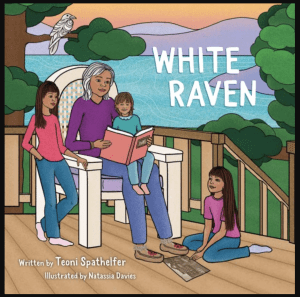
Spathelfer, Teoni. White Raven. Victoria: Heritage, 2021.
Little Wolf moves with her husband and three daughters to a peaceful island home where they enjoy living by the seashore and exploring in the forest. When Little Wolf’s mother, White Raven, comes to visit, the girls learn about their grandmother’s childhood in a residential school. Based on the author’s own mother’s experiences at a residential school in Alert Bay, B.C., this picture book is one of the most detailed in its depiction of life for indigenous children. It focuses on facts: children had their heads shaved and covered with DDT; the food given to them was often mouldy and bug-ridden; sausages were served raw; toilet paper was sometimes eaten to appease the constant hunger; nights were filled with the sounds of children crying; if they spoke their own language, their mouths were washed out with soap; they were always called by number rather than name. However, the story also mentions the kindness of one of the teachers, Mrs. Oak, who cared for White Raven when she was ill and sewed her a new dress.
The format of this book – brightly coloured illustrations and a relatively large font with widely spaced lines of print – makes it ideal for reading aloud. The sentence structure is straight-forward and well-suited for readers eight to ten years old. The factual details make it excellent as a research resource for students nine to twelve years old. Therefore, while discretion should be used in presenting this picture book to very young readers, it is highly recommended for both elementary and middle school libraries.
More picture books based on memories
More books about indigenous people
More books set in Canada
